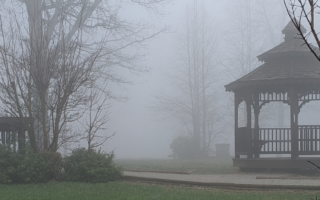It’s been a little while since my last #100DaysToFall post; I’ve been working on an R&R for a teaching-centric article and, oh yeah, presenting at The Teaching Professor Conference (*in person*) in New Orleans. My mind is aswirl with all sorts of thoughts about teaching and pedagogy and higher education and equity and collaboration and students and ALL! THE! THINGS!
Today, I want to write about a book I read last week, a short contribution from John Warner called Sustainable. Resilient. Free. The Future of Public Higher Education. As the title implies, Warner is a vocal advocate for tuition-free public higher education. There is much in this slim volume to mull over for those of us engaged in higher ed, but today I want to focus on one thread I can’t stop thinking about. It has to do with scholarly research.
In Chapter 9 (“Teaching and Learning: The Core of the Sustainable, Resilient, and Free Public Institution”), Warner begins with the sense that tuition dollars are ostensibly to fund the costs of an institution’s key function — namely, instruction. As taxpayer investment in higher education has declined, though, increasingly student-paid tuition dollars have necessarily covered more and more of a college’s budget. You’d think that this would prompt institutions to review their expenses and ensure those dollars are being funneled to the core function — again, instruction. Not so, Warner says.
“In fact, student tuition subsidizes all manner of what is commonly called ‘departmental research.’ This is probably going to have to stop. It is going to have to stop because the mechanism by which this research work has been protected is through the steady ‘adjunctification’ of faculty.” (page 101)
Citing a study by Charles Schwartz, “Disaggregating the Costs of Academic Missions at the University of California,” Warner reports that roughly 40 percent of undergraduate tuition dollars at UC-Berkeley subsidize faculty research. The problem? Warner says this research has “at best, a tangential relationship to students’ experiences at the institution.” (page 102)
With me so far? Now comes the clincher — the thing that sucker punched me as I thought about 4-year schools where I’ve worked in years past.
If producing knowledge (“knowledge work,” in Warner’s words) is so critical to the mission of higher education, “how can we claim [this] when an ever-shrinking minority of faculty are actually able to pursue this kind of work as part of their compensated job duties? … In their role as human shields, nontenured faculty are paid less for the identical labor of teaching. This is the very definition of an unsustainable practice, and it is demonstrably damaging to a university’s institutional mission.” (page 103)
In short: If producing research is vital to higher education, why do the majority of our professors work for poverty wages (often without benefits or any sense of permanency) while the elite few are paid to teach less and think more? In what way does this represent good stewardship of the increasingly enormous dollars we ask our public-institution students to pay? How do we abide by this?
I have taught at 4-year state institutions at many points in my long career. In all cases, I was employed on short-term teaching contracts, rarely with benefits or full-time status, with teaching loads at least double that of my tenure-track colleagues. I hustled to ensure students had a positive learning experience, access to the very best I could give them, while relying on other sources of money to ensure I could eke out a living. Meanwhile, my significantly-better-compensated colleagues taught less, thought more, and — while always nice to me — looked down on my lack of research productivity and knowledge work. I was a second-class citizen in those higher education spaces, despite doing the real work of the universities’ core missions (instruction).
The assertion that adjuncts are “human shields” for these well-compensated and relatively protected faculty prompts a visceral reaction. From the student perspective, the distinction between adjunct faculty and tenured faculty is often invisible; they want teachers who care about them, are passionate about their topics, and are competent at communication and feedback. How many articles you’ve published or which press picked up your latest academic book matters not a whit.
We can, and should, and MUST do better.
Read more here or read more here or see background facts about adjuncts here








